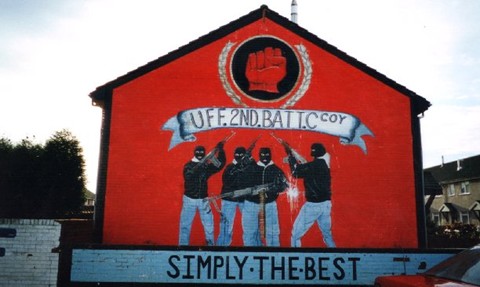
Last night’s killings of two British soldiers near Antrim have plenty of folks worried that Northern Ireland’s “Troubles” are set to flare anew. It had been a while since the hyper-violent Real IRA had executed such a bold attack, and you’ve got to think that Loyalist paramilitaries will be tempted to carry out reprisals against Catholic civilians.
But the response from the upper echelons of Northern Ireland’s government has been heartening, as former combatants have urged calm. Having spent a fair bit of time in Northern Ireland over the years, my hunch is that the Real IRA lacks the punch to significantly disrupt the peace process. Despite the presence of the word “Army” in their name, it seems to be a rather tiny force—probably no more than 100 active members, many of them more interested in gangsterism than political struggle. Even back in the late 1990s, when I lived in Dublin, the word was that even the more mainstream Provisional IRA would rather use its muscle to tax small-time Ecstasy dealers than assassinate British politicians.
That’s not to say there isn’t plenty of tension on the streets of Belfast. Visitors can experiences some of that raw hatred first-hand by checking out the city’s celebrated political murals. Most tourists pay for a black-cab tour of Belfast’s strange artwork, but I’d recommend legging it out—the cabbies skip a lot of the gems, which are often tucked away in alleys or painted onto pub walls. But be careful—Microkhan cannot be held liable for any injuries incurred should you wander into a Shankill Road pub populated by lagered-up UVF types.
More background on the meaning of the mural symbols here. And here’s the portal to the BBC’s excellent historical primer on The Troubles.
(Photo from Skimming.com)


Like gas stations in rural Texas after 10 pm, comments are closed.